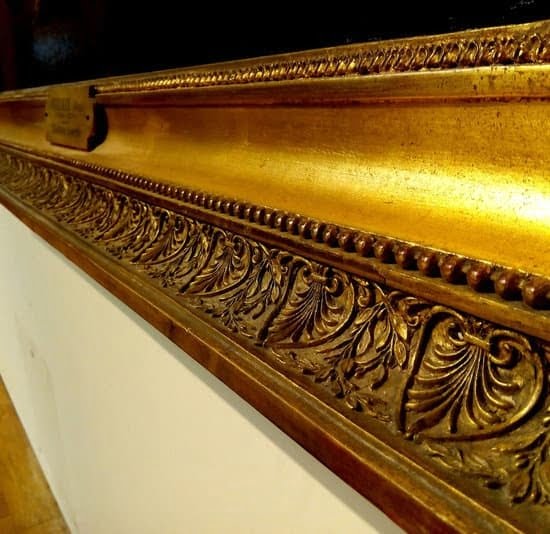Removing double-sided tape from woodwork can be a daunting task, but with the right tools and techniques, it is definitely achievable. Whether you are dealing with residue from mounting decorations or trying to clean up after a DIY project, knowing how to effectively remove double-sided tape from woodwork is essential.
In this article, we will explore the various types of double-sided tape commonly used on woodwork, the tools and materials needed for removal, step-by-step guides on the best removal methods, precautions to take during the process, and tips for preventing future residue.
One of the most common challenges when it comes to removing double-sided tape from woodwork is avoiding damage to the surface. The adhesive properties of the tape often make it difficult to remove without leaving behind a sticky residue. Additionally, some types of wood may be more sensitive to certain removal methods than others. Understanding these challenges can help you approach the task with greater confidence and success.
By familiarizing yourself with the different types of double-sided tape and learning about the tools and materials necessary for removal, you can ensure that you are well-equipped to tackle this challenge. From heat guns to adhesive removers, there are various options available for effectively removing double-sided tape from woodwork. As we delve deeper into this article, you will gain valuable insights into how to approach this task strategically and safely.
Types of Double-Sided Tape Commonly Used on Woodwork
When it comes to woodwork, double-sided tape is often used for various applications such as mounting, securing, or joining different pieces together. There are several types of double-sided tape that are commonly used on woodwork, each with its own specific features and adhesive properties.
One of the most common types of double-sided tape used on woodwork is the regular double-sided masking tape. This type of tape is typically used for temporary applications such as holding down a template while cutting or routing wood. It has a moderate adhesive strength and can be easily removed without leaving residue.
Another popular type of double-sided tape for woodwork is the foam mounting tape. This type of tape is thicker and provides a stronger bond, making it suitable for permanent mounting applications such as attaching trims, moldings, or other decorative elements to woodworking projects.
Lastly, there are also heavy-duty double-sided tapes designed specifically for woodworking applications. These tapes have a very strong adhesive strength and are often used for heavy-duty bonding tasks such as attaching panels or laminates to wooden surfaces.
Overall, understanding the different types of double-sided tapes commonly used on woodwork will help in choosing the right method for removing them without causing damage to the wood surface.
| Type of Double-Sided Tape | Common Applications |
|---|---|
| Regular Double-Sided Masking Tape | Temporary holding, positioning templates |
| Foam Mounting Tape | Permanent mounting of trims and moldings |
| Heavy-Duty Double-Sided Tape | Strong bonding for heavy-duty woodworking tasks |
Tools and Materials Needed for Removing Double-Sided Tape
Removing double-sided tape from woodwork can be a tricky task, but with the right tools and materials, it can be done effectively without causing damage to the wood. The most common types of double-sided tape used on woodwork are foam tape, cloth tape, and heavy-duty adhesive tape. Each type may require different techniques for removal, so it’s important to have the appropriate tools and materials on hand.
One of the most effective ways to remove double-sided tape from woodwork is by using heat. To do this, you will need a hairdryer or heat gun to warm up the adhesive. Once the adhesive has softened, you can gently peel off the tape using a putty knife or plastic scraper. Additionally, rubbing alcohol or adhesive remover can be used to dissolve any remaining residue.
Another method for removing stubborn double-sided tape from woodwork is by using a solvent such as mineral spirits or Goo Gone. These products can help break down the adhesive, making it easier to scrape off the tape. However, it’s important to test these solvents on a small, inconspicuous area of the woodwork first to ensure they won’t cause any damage.
In addition to the tools and materials mentioned above, you may also want to have some fine-grit sandpaper and furniture polish on hand for aftercare. Sanding any remaining residue gently and then polishing the woodwork can help restore its original appearance after removing the double-sided tape.
| Tools and Materials | Methods |
|---|---|
| Hairdryer or heat gun | Heat method for softening adhesive |
| Putty knife or plastic scraper | Gently peel off softened tape |
| Rubbing alcohol or adhesive remover | Dissolve remaining residue |
Step-by-Step Guide on How to Heat and Peel Off the Double-Sided Tape
Removing double-sided tape from woodwork can be a tricky task, but with the right tools and techniques, it can be done effectively. One of the most common methods for removing double-sided tape from woodwork is by using heat to soften the adhesive and then peeling it off. This method is especially useful when dealing with stubborn or old tape residue that has firmly adhered to the wood surface.
To successfully remove double-sided tape from woodwork using heat, you will need the following tools and materials:
- Hairdryer or heat gun
- Plastic putty knife or scraper
- Cloth soaked in rubbing alcohol or adhesive remover
Step 1: Apply Heat to the Tape
Using a hairdryer or heat gun on a low setting, direct the hot air onto the double-sided tape. Move the heat source back and forth over the area, ensuring that the tape is evenly warmed. The heat will soften the adhesive, making it easier to remove.
Step 2: Peel Off the Tape
Once the adhesive has been softened by the heat, use a plastic putty knife or scraper to gently lift one corner of the tape. Slowly peel back the tape while continuing to apply heat as needed. Be careful not to rush this step as applying too much force may damage the wood surface.
Step 3: Clean Any Residue
After removing the bulk of the double-sided tape, there might still be residue left on the woodwork. Use a cloth soaked in rubbing alcohol or adhesive remover to gently wipe away any remaining residue. Be sure to test these products on a small inconspicuous area first to ensure they do not damage or discolor the wood surface.
By following these steps carefully, you can effectively remove double-sided tape from woodwork without causing any damage to its surface. Remember to take your time and exercise patience during this process for best results.
Alternative Methods for Removing Stubborn Double-Sided Tape From Woodwork
When it comes to removing stubborn double-sided tape from woodwork, sometimes the heating and peeling method may not be enough. In such cases, alternative methods can be used to effectively remove the tape without causing damage to the woodwork. Here are some alternative methods for removing stubborn double-sided tape from woodwork:
1. Use rubbing alcohol: Soak a cloth in rubbing alcohol and apply it directly to the double-sided tape. Let it sit for a few minutes to loosen the adhesive, then gently peel off the tape. Repeat as necessary until all of the tape is removed.
2. Apply oil or lubricant: Another effective method for removing stubborn double-sided tape is by applying oil or lubricant. Simply apply a small amount of oil or lubricant to the tape and let it sit for a few minutes. Then, use a plastic scraper or credit card to gently peel off the tape without damaging the woodwork.
3. Use a hairdryer: If heating the tape with a heat gun is too harsh for delicate woodwork, using a hairdryer on high heat can also help soften the adhesive. Hold the hairdryer a few inches away from the tape and move it back and forth until the adhesive loosens, then carefully peel off the tape with your fingers or a plastic scraper.
These alternative methods can provide effective solutions for removing stubborn double-sided tape from woodwork without causing any damage. However, it’s important to exercise caution and test these methods on a small, inconspicuous area of the woodwork first to ensure that they do not cause any harm.
Precautions to Take to Avoid Damaging the Woodwork During the Removal Process
Protective Gear and Workspace
Before beginning the process of removing double-sided tape from woodwork, it is important to gather the necessary protective gear and set up a suitable workspace. Protective gear such as gloves and safety goggles should be worn to prevent any injuries. Additionally, laying down a protective covering on the floor or work surface can help minimize any potential damage caused by heat or cleaning solutions.
Testing an Inconspicuous Area
To avoid causing visible damage to the woodwork, it is recommended to first test the removal method in an inconspicuous area. This will allow you to assess how the wood reacts to the heat or cleaning solution, and make adjustments if necessary. By starting with a small test area, you can ensure that the woodwork remains unharmed during the removal process.
Gentle Techniques
When applying heat or using any tools to remove double-sided tape from woodwork, it is crucial to use gentle techniques to prevent causing damage. Avoid using excessive force when peeling off the tape, as this can result in scratches or dents on the wood surface. Similarly, when using cleaning solutions, opt for mild products that are safe for use on wood. Taking a cautious approach will help preserve the integrity of the woodwork throughout the removal process.
By taking these precautions, you can ensure that your woodwork remains undamaged while effectively removing double-sided tape. Following these guidelines will help you achieve a successful removal without compromising the quality of your woodwork.
Aftercare
After successfully removing the double-sided tape from woodwork, it is important to properly clean and restore the surface to its original condition. Residue from the tape can leave behind a sticky mess that may be unsightly and difficult to remove. Additionally, the woodwork may require some restoration in order to return it to its former state. This section will provide a guide on how to clean and restore woodwork after removing double-sided tape.
Cleaning the Woodwork
To begin the aftercare process, start by using a mild cleaning solution or adhesive remover to get rid of any remaining residue from the double-sided tape. Apply the solution onto a soft cloth and gently rub it over the affected areas. Be careful not to use abrasive materials or harsh chemicals that could damage the woodwork’s finish.
Restoring the Woodwork
After cleaning off any remaining residue, assess if there is any damage to the woodwork caused by the double-sided tape removal process. For minor scratches or discoloration, consider using a furniture polish or wax to restore the surface. For deeper damage, such as gouges or deep scratches, it may be necessary to sand and refinish the affected area.
Protecting the Woodwork
Once you have successfully cleaned and restored the woodwork, take preventive measures against future adhesive mishaps by applying a thin layer of furniture wax or polish to create a protective barrier. This will help prevent double-sided tape residue from adhering too strongly onto the surface in case it is used again in the future.
By following these steps for aftercare, you can effectively clean and restore your woodwork after removing double-sided tape, ensuring that it remains in pristine condition.
Tips for Preventing Double-Sided Tape Residue on Woodwork in the Future
In conclusion, removing double-sided tape from woodwork can be a challenging task, but with the right tools, materials, and techniques, it is definitely possible. Understanding the types of double-sided tape commonly used on woodwork and knowing the proper precautions to take can make the removal process much smoother.
By following a step-by-step guide on how to heat and peel off the double-sided tape, as well as considering alternative methods for stubborn residues, one can successfully eliminate the tape without damaging the woodwork.
For preventing double-sided tape residue on woodwork in the future, there are several proactive measures that can be taken. One important tip is to always clean and prepare the surface before applying double-sided tape to ensure better adhesion. Additionally, choosing high-quality double-sided tape that is specifically designed for use on wood can also help prevent residue buildup.
It’s also advisable to consider using alternative fastening methods such as screws or brackets when possible in order to avoid using double-sided tape altogether. By taking these preventive measures and being mindful of aftercare in cleaning and restoring woodwork, one can minimize the need for removing stubborn residues in the future. Ultimately, with a combination of knowledge, preparation, and careful application, one can effectively prevent and address double-sided tape residue on woodwork.
Frequently Asked Questions
How Do You Remove Double-Sided Tape From Trim?
To remove double-sided tape from trim, you can try using a hairdryer to heat up the tape and then carefully peel it off. Another method is to use a solvent like rubbing alcohol or adhesive remover to dissolve the adhesive and loosen the tape from the trim.
Gently scraping with a plastic putty knife can also help remove any remaining residue.
How Do You Remove Double-Sided Tape From a Door Frame?
Removing double-sided tape from a door frame can be done using similar methods as with trim. Heating the tape with a hairdryer can make it easier to peel off, while using a solvent or adhesive remover can help dissolve the adhesive.
Be sure to test any solvent on a small, inconspicuous area of the door frame first to ensure it won’t damage the finish.
Is There a Trick to Peeling Double-Sided Tape?
One trick to peeling double-sided tape is to start by gently lifting one corner of the tape with your fingernail or a plastic scraper. Once you have a small section lifted, continue pulling it back on itself at a 180-degree angle, rather than straight up, which can help prevent stretching and tearing of the tape.
If it’s still difficult to peel, applying heat with a hairdryer or using an adhesive remover can make the process easier.

Hi everyone! I’m a woodworker and blogger, and this is my woodworking blog. In my blog, I share tips and tricks for woodworkers of all skill levels, as well as project ideas that you can try yourself.





